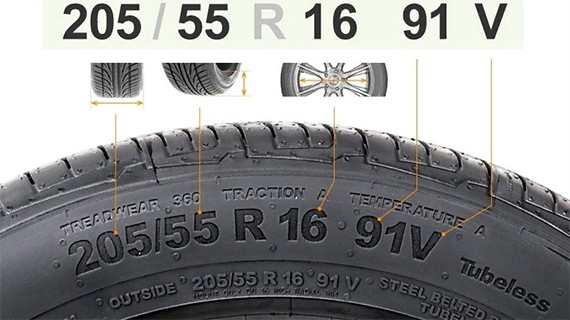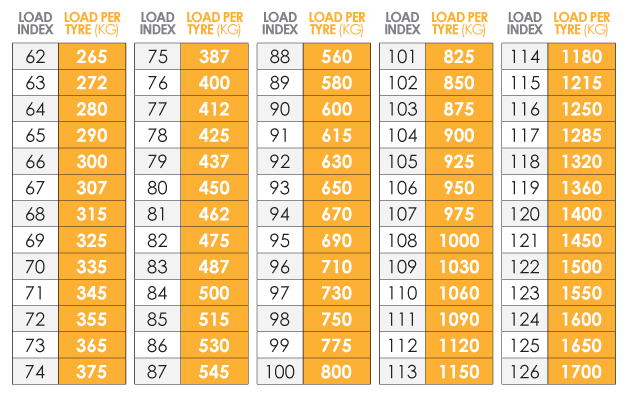Established marking standards allow you to find out the characteristics of a car tire by looking at its sidewall. But not all motorists, especially beginners, can easily “read” the applied designations. Today we will analyze what tire parameters are and how manufacturers indicate them on their products.
Tire sizes
The first and main parameter that you should pay attention to is the numbers on the sidewall.

A popular size for mid-size city cars.
For example, “205/55R16” means that
tire width is 205 mm;
the percentage ratio of the height of the tire to its width (and not the height itself, as some motorists mistakenly believe) – 55%;
The inner diameter of the tire (or the outer diameter of the wheel it fits) is 16 inches.
The manufacturer usually indicates the optimal size for your car in the owner’s manual.
The use of tires of a smaller diameter will lead to a decrease in ground clearance, and larger models may simply not fit into the wheel arches.
Diagonal and radial cords
Tires differ in the way they are tensioned with cord threads: in diagonal ones they are allowed to cross, in radial ones they are not. The second option is more modern, characterized by increased rigidity and reliability. Designated with the word “Radial” or the letter “R” in the frame size.
Radial tires, due to the larger contact area, provide better traction.
Load and speed indices
After the standard size, there are load and speed indices, that is, the maximum allowable values for this type of rubber (in our case, “91V”).
In the presented version, the load on one wheel should not exceed 615 kg, and your speed should not exceed 240 km/h.
Choose the load index for a car based on half the maximum weight acting on the axle. Manufacturers recommend choosing tires with a margin of 15-20% of the calculated value.
Also calculate the speed index with a margin of about 15%. Such an amendment is needed due to the fact that the speed of the car can increase on long descents or with a strong tailwind.

Calculate the load index for SUV tires with a margin of 30%.
Seasons and features of the road surface
Tires are divided into winter, summer and all-weather. Manufacturers indicate belonging to a certain type using appropriate inscriptions or images (raindrops, sun rays, snowflakes, etc.). The presence of several images indicates the all-season product.
Summer – summer tires.
Winter – tires for winter driving.
AGT, AS, All Season, R+W (Road + Winter) – all season tires.
M + S (Mud + Snow) – an indication that this rubber can be driven in mud or snow. In the Russian Federation they are all-weather.
M / T (Mud Terrain) – suitable for driving on muddy landscapes, but wear out faster than conventional tires on asphalt.
A / T (All Terrain) – a compromise solution suitable for paved roads and moderate off-road.
Water, Rain, Aqua, etc. are most effective on wet pavement.
Additional marking
Extra Load or XL – manufacturers claim that these tires have an increased load capacity. But the actual allowable load is determined only by the corresponding index.
SUV or 4×4 – this is how models designed for all-terrain vehicles and crossovers are marked. Thanks to the reinforced frame, they have greater strength and rigidity.
The letter “C” after the standard size – is placed on models suitable for small trucks or minivans. Usually they have a double load index (for example, 102-100 / Q), where the first number indicates the carrying capacity for single-slope cars, and the second for dual-slope ones.
Front Wheel and Rear Wheel – indicates that the tire can only be installed on the front or rear wheel, respectively.
Rotation – indicates the direction of rotation of automotive rubber. Can be supplemented or replaced by curly arrows. Present only on models with an asymmetric pattern.
DOT – this is how tires recommended for use in the United States are marked (this means that they meet the standards of the US Department of Transportation).
The letter “E” in a circle indicates that the tires meet European quality standards. It is much more common on the Russian market than “DOT”.
RunFlat (RSC, MOE, AOE, SSR, EMT, ZP, RF) – on such rubber, you can continue to move at a speed of no more than 80 km / h after a complete loss of tire pressure. The distance that can be driven on a flat tire depends on the manufacturer and ranges from 50 to 150 km.
TWI is a marker showing tread wear. Indicates its minimum allowable depth. The inscription, which begins to wear off, is a clear sign that the rubber needs to be replaced urgently.
Traction A, B or C is an indicator of improved braking on wet pavement. The highest index is “A”, the lowest – “C“.
AD, SD, DD, OD, MD – the presence of aluminum spikes, with a carbide, rectangular, oval core, plastic with a carbide core, respectively.
Michelin, Goodyear, Pirelli, Yokohama, etc. – the manufacturer must be indicated on the tires. Tires without a manufacturer’s name may not meet the declared characteristics, and their use may be unsafe.
colored labels
They come in red, green, yellow or white and help you properly install the tires on the car.
The red dot or triangle marks the most rigid place on the tire. When installed on an alloy wheel, it must be aligned with the “L” mark.
The white dot or triangle is the most flexible part of the rubber and should be on the opposite side of the “L” mark.
The yellow mark is the lightest part of the product and should line up with the spool on the disc.
Green circle – this is how manufacturers usually mark products before initial installation.
Colored stripes help warehouse workers recognize tire sizes and models stacked in stacks.
Chambered and tubeless options
Most modern tires are tubeless. They are designated “TL” or “Tubeless”. Outdated chamber models are labeled “TT” or “Tube Type”. They differ in the way they are attached to the rim of the disc.
Tubeless tires with minor punctures are repaired without removing them from the wheel; also, with periodic pumping, drive to the nearest car service.
Date of tire manufacture
During long-term storage, tires lose their elasticity, and their driving performance deteriorates.
But on the models of some manufacturers, you can “read” the year of manufacture and refuse to buy old products.
A 3- or 4-digit code is indicated on the side in a rectangular frame with rounded corners. In the first case, the tire was produced before 2000, in the second – after. The first two digits of the number indicate the week, the last – the year. For example, code 308 means that tires were released in July 98 or 88, 1517 – in April 2017.
You also can read :What pressure should be in the tires?
How to decipher American markings
In the United States, tires are produced with two different markings. The first differs from the European ones only in additional letters before the standard size:
P (Passenger) – models for cars.
LT (Light Truck) – tires for small trucks.
The second one is more different from the standard size we are used to, besides it indicates the dimensions in inches. For example, a 33×12.50 R15 tire has an outer diameter of 33 inches, a profile width of 12.5 inches, and an inner diameter of 15 inches. The rest of the abbreviations are identical to the generally accepted ones.


[…] Established marking standards allow you to find out the characteristics of a car tire by looking at its sidewall. But not all motorists, especially beginners, can easily "read" the applied designations. Today we will analyze what tire parameters are […]
[…] also: Tire Marking : Decoding Of Symbols On TiresWhat to look for when checking tire pressure?In order not to be mistaken, having even the most […]